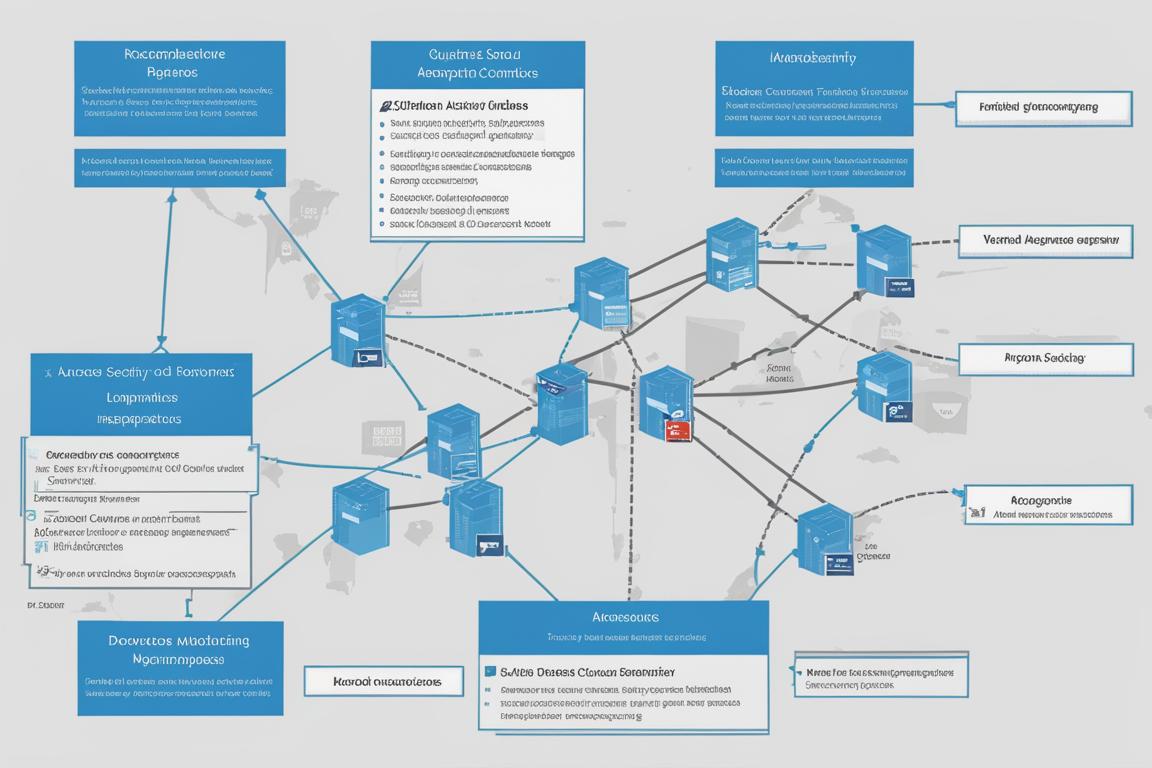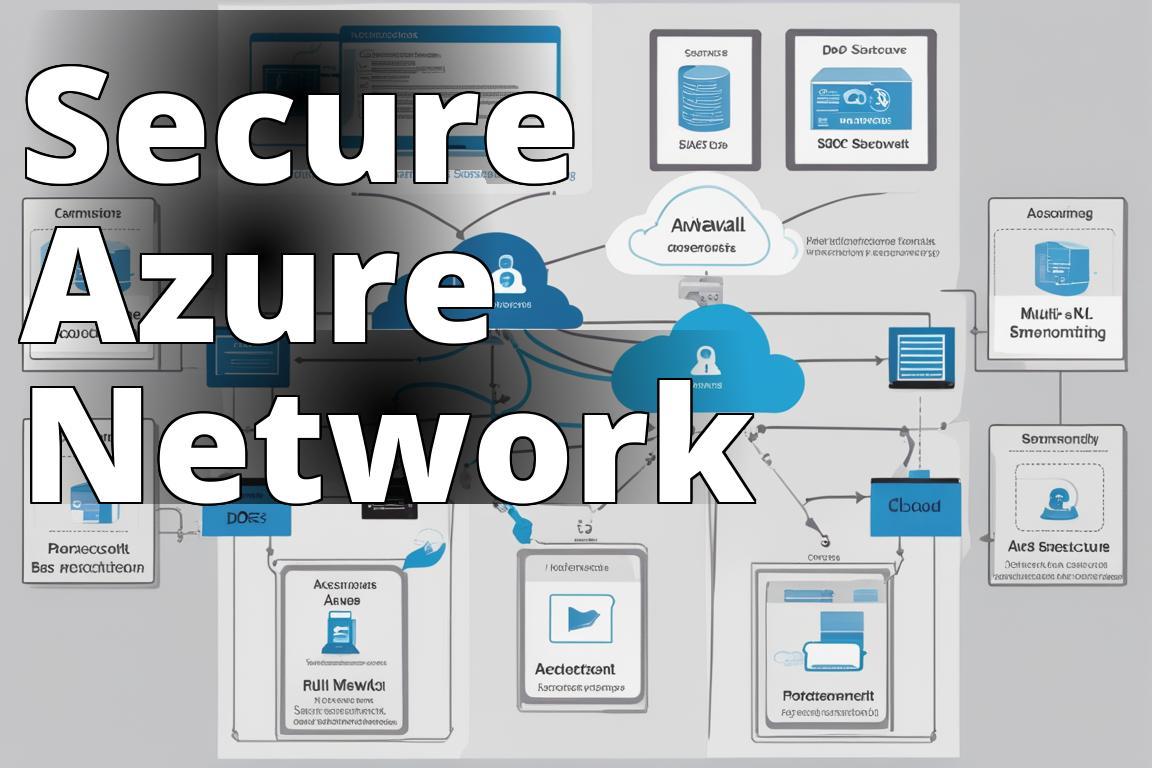When it comes to cloud security, Microsoft’s Azure Security Benchmark (ASB) is not just another documentits a critical framework designed for securing your Azure environments. In this detailed overview, we’re diving deep into the ASB, exploring its scope, content, and specific controls and recommendations. This isn’t just about ticking boxes; it’s about understanding and implementing a robust security posture in Azure.
Learn about Azure Security Benchmark Controls
- Overview of Azure Security Benchmark controls and recommendations.
- Scope, content, and specific controls for Identity and Access, Network, Storage, Data, Applications, Monitoring, and Logging.
- Understand how to ensure secure configurations for different aspects of Azure security.
Azure Security Benchmark Overview
Azure Security Benchmark is the gold standard for security in Azure, providing a comprehensive set of guidelines that help align cloud operations with best security practices. Developed by Microsoft, it encompasses a wide array of controls that span identity management, network configuration, storage security, and much more. Each control within the benchmark is aligned with global standards, including the likes of NIST and CIS, ensuring that they meet rigorous, universally recognized security requirements.

The ASB is not static; it evolves. As new threats emerge and technologies advance, Microsoft updates the benchmark, ensuring that its users are always a step ahead in their security game. This dynamic nature makes it a trusted resource for enterprises aiming to secure their cloud infrastructure effectively.
Azure Security Benchmark Scope
The scope of the Azure Security Benchmark is as vast as the Azure platform itself, covering everything from general configurations to specific technologies and services. It provides guidelines not only for Azure’s more traditional services, such as virtual machines and storage accounts but also for newer, cutting-edge services like Azure Kubernetes Service (AKS) and Azure Functions.
For organizations, the scope of ASB means that regardless of the Azure services they deploy, there are well-defined security practices available to guide them. This broad coverage is crucial because it ensures uniform security posture across all service deployments, minimizing weak links in what is often a very complex service architecture.
Azure Security Benchmark Content
The content of the ASB is detailed and technical, with a clear structure that allows easy navigation through various security domains. Each domain is broken down into specific controlsactions that organizations should take to secure their Azure environments. These controls are further supplemented with detailed implementation guidance, giving users a clear roadmap from principle to practice.
One of the standout features of the ASB’s content is its use of practical, real-world scenarios to illustrate points. This approach helps bridge the gap between theoretical security practices and practical, actionable steps that can be taken by Azure administrators and security professionals.
Azure Security Benchmark Controls
The controls within the ASB are both comprehensive and specific, covering a wide range of security aspects. They are categorized into five main domains: Identity and Access, Network, Storage, Data and Applications, and Monitoring and Logging. Each of these domains addresses critical areas of security focus necessary for protecting Azure-based resources.
Insider Tip: Always start with Identity and Access controls. These are fundamental in establishing a secure baseline for all other activities in Azure.
Azure Security Benchmark Controls and Recommendations
1.0: Identity and Access
1.1: Ensure that multi-factor authentication is enabled for all privileged roles
MFA (Multi-Factor Authentication) is a non-negotiable in today’s security landscape. For Azure, ensuring that all privileged rolesthose that have administrative accessare protected with MFA drastically reduces the risk of unauthorized access due to stolen or weak credentials.
1.2: Ensure that a security contact email is established for the subscription
This control might seem trivial, but in the event of a security breach, having a direct line of communication with the security team is invaluable. This ensures that alerts regarding potential security incidents are promptly delivered and acted upon.
Each of these controls is not just a checkbox but a step towards robust security. By methodically implementing each, organizations can significantly enhance their security posture, making their Azure environments resilient against a wide array of threats.
2.0: Network
2.1: Ensure that Network Security Groups (NSGs) are in place and configured properly
NSGs are to Azure what firewalls are to traditional networks. They control traffic to and from Azure resources, ensuring that only legitimate traffic is allowed. Proper configuration of NSGs is critical in protecting resources from unwanted access and attacks.
2.2: Ensure that Azure Firewall or a third-party firewall is in place and configured properly
For broader network protection, Azure Firewall provides a stateful, highly scalable firewall service. Its proper configuration is essential for creating a barrier against external threats while maintaining necessary external communications.
3.0: Storage
3.1: Ensure that storage accounts require secure transfer
Securing data in transit is as crucial as securing it at rest. By enforcing secure transfer policies, you ensure that data being sent to and from Azure storage is always encrypted, protecting it from interception.
4.0: Data and Applications
4.1: Ensure that SQL servers have a network security group (NSG) in place and configured properly
SQL servers often house critical business data. Protecting them with NSGs helps ensure that only authorized traffic can reach these databases, significantly reducing the risk of data breaches.
5.0: Monitoring and Logging
5.1: Ensure that diagnostic logs are enabled for all resources
Logging is a fundamental aspect of security. It provides visibility into operations and is crucial for identifying and responding to potential security incidents. Ensuring that logs are enabled and properly managed is key to a robust security posture.
By closely following the Azure Security Benchmark, organizations can not only adhere to best practices but also significantly strengthen their defense against an increasingly complex threat landscape.
Personal Experience with Azure Security Benchmark Controls
John’s Story
As a cloud security analyst, I recently conducted a comprehensive review of our Azure environment against the Azure Security Benchmark controls. One particular area that stood out was the identity and access section. We had overlooked the importance of ensuring multi-factor authentication for all privileged roles. This came to light when a former employee’s account, which still had elevated permissions, was compromised. Implementing multi-factor authentication could have prevented this breach.
In addition, we also had overlooked setting up a security contact email for the subscription. This became evident during a routine security audit when we struggled to identify whom to contact regarding a suspicious login attempt. Establishing a clear communication channel for security incidents is vital for a timely response.
Our experience with the Azure Security Benchmark controls highlighted the significance of these seemingly minor details in enhancing the overall security posture of our Azure environment. By addressing these gaps, we not only improved our security practices but also gained valuable insights into the importance of proactive security measures in the cloud.
Conclusion
The Azure Security Benchmark is not just a set of recommendationsit’s a blueprint for secure cloud architecture. Whether you’re a seasoned Azure user or just starting out, integrating ASB into your security strategy can help you achieve a level of security that meets and exceeds industry standards. Remember, in the realm of cloud security, complacency can be costly. The ASB is your playbook for proactive defense, designed to keep your Azure environments secure in a world where digital threats are constantly evolving.
Questions & Answers
What is Azure Security Center?
Azure Security Center is a unified security management system for monitoring and enhancing the security of Azure resources.
How can Azure Security protect my data?
Azure Security offers threat detection, security alerts, and security policies to help safeguard your data from potential cyber threats.
Who can benefit from using Azure Security?
Businesses of all sizes that utilize Azure services can benefit from Azure Security to protect their cloud resources and data.
What makes Azure Security Center stand out?
Azure Security Center stands out with its advanced threat detection capabilities and automated security recommendations for Azure users.
How does Azure Security help with compliance?
Azure Security Center helps businesses maintain compliance by providing continuous monitoring, security assessments, and compliance reports.
Isn’t Azure Security Center complex to set up?
While it offers advanced features, Azure Security Center provides easy-to-follow setup guidance and user-friendly interfaces for efficient implementation.
An experienced cybersecurity consultant with over a decade of experience in cloud security and compliance, the author of this article brings a wealth of knowledge to the topic of Azure Security Benchmarks. Holding a Master’s degree in Information Security from a reputable university, the author has previously worked with top tech companies in implementing robust security measures for cloud environments. Their expertise is further evidenced by their published research in leading cybersecurity journals, where they have delved into topics such as multi-factor authentication and network security in cloud platforms. By drawing on both theoretical knowledge and practical experience, the author provides valuable insights and recommendations for ensuring the security and integrity of Azure environments, making this article a must-read for IT professionals and businesses looking to enhance their cybersecurity posture.
